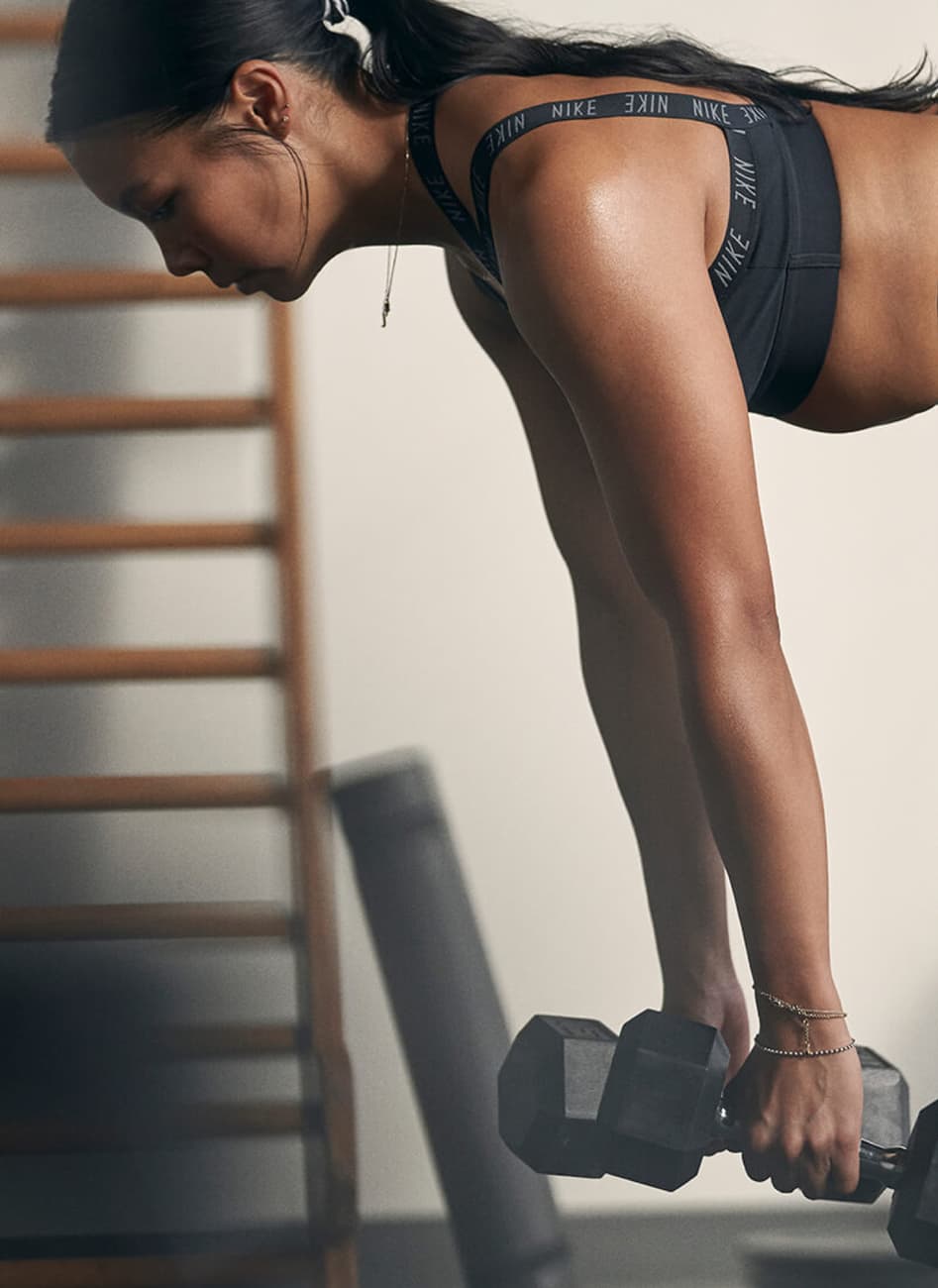The End of Season Sale is on. Shop
How To Reset Between Programmes
Coaching
Nike Training

Take a proper break to help you achieve your fitness goals.
If you crushed your at-home training programme, you probably feel ready for a (well-deserved) break from going so hard... and the good news is that taking it easy is actually the best thing you can do to keep your body healthy, strong and injury-free. That thoughtful pause between programmes is when the real magic happens. A recovery period allows your body to repair and rebuild, helping your muscles get stronger, your nervous system fire faster and your mind grow sharper.
"The best way to reset is to give yourself a deload week".
Ryan Flaherty, Nike Director of Performance
It does matter how you take your break, though—and it should be just as intentional as your workouts have been. The best way to reset is to give yourself a deload week, says Ryan Flaherty, Nike Director of Performance. Deloading is exactly what it sounds like: reducing the amount of exercise you do, plus zeroing in on activities that help your body bounce back from all the hard work you've put in. Far from hurting or stalling your progress, a deload week will ensure that you're restored and ready to give 100 percent to your next workout programme. Here's exactly how to do it.
- Dial back to 50—not 0.
Deload isn't synonymous with doing nothing. If you go totally sedentary after a programme, you risk losing your physical—and mental—momentum, making it harder to go all in again when your restful week is over. Instead, get the best possible recovery by cutting your training load in half. For example, if you've been hitting three or four intense training sessions each week, bring that down to one or two sessions—you could go back and cherry-pick your favourite workouts from the programme. If pulling back this much makes you feel restless, add in low-impact activities like an easy bike ride, a short walk or browse the mobility section of NTC to find restorative workouts that will help your recovery and keep you moving
- Watch what you eat.
Deloading your training also doesn't mean derailing your diet! While it might seem like the perfect time to reward yourself with heavy meals, sweets and extra beers, this is actually the time when you need to be sharpest about nutrition. That's because when you deload, you naturally become more sedentary, so you burn fewer calories. The calories you do take in should come from healthy, nutrient-dense foods to better help your body repair and rebuild. Once you kick off a new workout plan, and you're training hard again, you'll have a little more leeway in your diet; that's when your body will require more energy to burn for fuel—so you have more room for allowances! - Focus on recovery
Think of deloading as a spa week for your body: spend time foam-rolling while you catch up on your favourite shows, take a long, hot bath with Epsom salts, or go to bed an hour early. All of these things will help your muscle fibres repair and regenerate faster. And just as important, you'll give yourself the head space to mentally reset, too.

"Think of deloading as a spa week for your body".
During this downtime, you're in a great spot to re-evaluate your training goals and decide what's next. For your training sessions, go back to repeat some of your favourite workouts from your plan, or try a workout or two from different plans to see which one you want to tackle next. You can also go back to your completed plan and focus more on the holistic advice components—nutrition, sleep, recovery—that you didn't have time to fully nail before.
This way, once your deload week is finished, you're ready to get back at it—refreshed, motivated and stronger than ever.
Join Nike Training Club
Get access to our world-class experts and trainers to help you stay active and healthy.

Join Nike Training Club
Get access to our world-class experts and trainers to help you stay active and healthy.